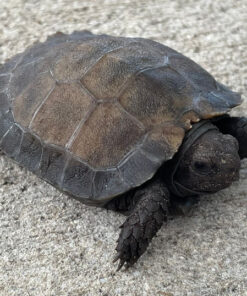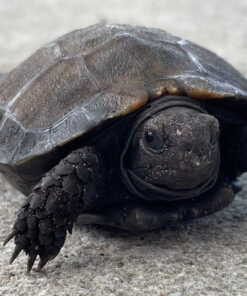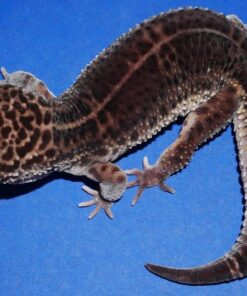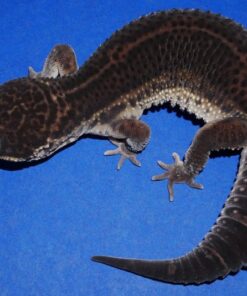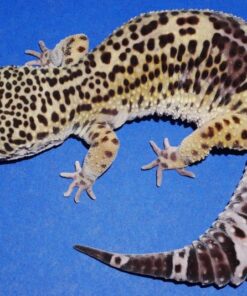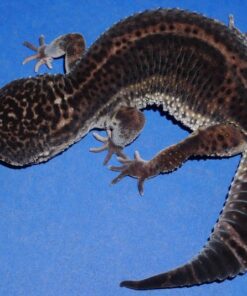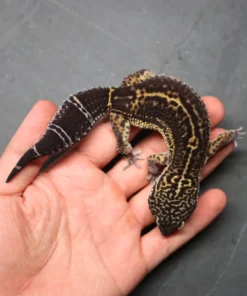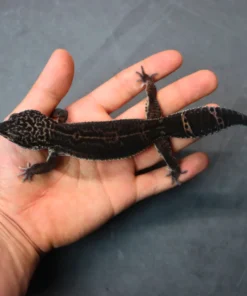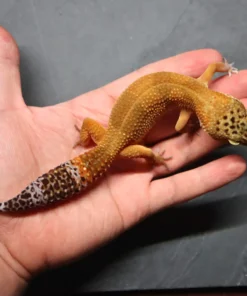Geckos For Sale
Geckos for sale online at reptiles shop online with guaranteed delivery to your address. Geckos are fascinating creatures that belong to the lizard family. These small reptiles are known for their unique ability to climb walls and ceilings due to their specialized toe pads that allow them to adhere to surfaces. Geckos come in various sizes and colors, with some species even having the ability to change their skin color for camouflage. They are found in different parts of the world, including tropical and subtropical regions. Geckos are primarily nocturnal, meaning they are most active during the night. They have excellent vision and are skilled hunters, feeding on insects and small invertebrates. Geckos also have the ability to regenerate their tails if they are injured or detached, which is a remarkable adaptation. Overall, geckos are intriguing creatures that have adapted to their environments in unique and fascinating ways.
Geckos Types:
There are various species of geckos found across the globe. These reptiles belong to the family Gekkonidae and are known for their unique characteristics and adaptations. Geckos are known for their ability to climb walls and ceilings due to their specialized toe pads that allow them to adhere to surfaces. They come in a wide range of sizes, colors, and patterns, making them a fascinating group of lizards. Some popular types of geckos include the leopard gecko, crested gecko, tokay gecko, and the African fat-tailed gecko. Each species has its own distinct features and habitat preferences, making the world of geckos diverse and captivating.
- Leopard Gecko:The Leopard Gecko, scientifically known as Eublepharis macularius, is a species of lizard that is native to the deserts of Pakistan, India, and Afghanistan. These geckos are known for their distinctive yellow and black spots, which resemble the patterns found on a leopard’s coat. Leopard Geckos are popular pets due to their docile nature, ease of care, and wide range of color variations. They are nocturnal creatures, meaning they are most active during the night, and they primarily feed on insects such as crickets and mealworms. Leopard Geckos are also unique in that they have movable eyelids, unlike other gecko species.
- Crested Gecko: The crested gecko, scientifically known as Correlophus ciliatus, is a fascinating reptile that originates from New Caledonia. This unique species is characterized by its distinctive crest that runs from its head to its tail, giving it its name. Crested geckos are arboreal creatures, meaning they spend most of their time in trees. They have specialized toe pads that allow them to effortlessly climb and cling to various surfaces. These geckos are known for their vibrant colors and patterns, which can vary greatly from one individual to another. They are also known for their ability to regenerate their tails if they happen to lose them. Crested geckos are primarily insectivores, but they can also consume fruit-based diets. They are relatively low-maintenance pets and have gained popularity among reptile enthusiasts due to their docile nature and unique appearance.
- Tokay Gecko:The tokay gecko is a fascinating reptile that belongs to the Gekkonidae family. This nocturnal creature is known for its distinctive appearance, with its vibrant blue-gray body, orange spots, and large eyes. The tokay gecko is native to Southeast Asia and is commonly found in countries such as Thailand, Malaysia, and Indonesia. It is a medium-sized gecko, growing up to 12 inches in length, and has a strong grip due to its specialized toe pads. The tokay gecko is also known for its unique vocalizations, which include loud, repetitive calls that can be heard during the night. These geckos are arboreal and are often found in trees or on walls, using their strong limbs and adhesive toe pads to climb and move effortlessly. They are primarily insectivorous, feeding on a variety of insects and small vertebrates. The tokay gecko is highly adaptable and has successfully established populations in various urban areas. Due to their striking appearance and interesting behaviors, tokay geckos are popular in the pet trade. However, it is important to note that they require specific care and should only be kept by experienced reptile enthusiasts.
- African fat-tailed gecko: The African fat-tailed gecko is a fascinating reptile native to West Africa. This unique species is known for its distinctive appearance and behavior. With its stout body and short, fat tail, it is easy to see how it got its name. The gecko’s coloration can vary, ranging from shades of brown to gray, with patterns that help it blend into its natural habitat. It has large, lidless eyes that provide excellent night vision, allowing it to be active during the twilight hours. In terms of behavior, the African fat-tailed gecko is primarily nocturnal, meaning it is most active at night. It is a solitary creature that spends its days hiding in crevices or burrows to avoid the heat of the day. This gecko is a skilled hunter, feeding on a diet consisting mainly of insects and small invertebrates. It uses its keen sense of smell to locate prey and its sticky tongue to capture it. Another interesting aspect of the African fat-tailed gecko is its ability to regenerate its tail. If threatened or attacked, it can detach its tail as a defense mechanism. The lost tail will eventually regrow, although it may not be as thick or long as the original. This adaptation helps the gecko escape from predators and survive in its natural environment. Overall, the African fat-tailed gecko is a captivating reptile with unique characteristics that make it a popular choice among reptile enthusiasts.
Geckos Habitat:
The natural environment where geckos live is known as their habitat. Geckos are typically found in a variety of habitats, including tropical rainforests, deserts, mountains, and even urban areas.Their habitats provide them with the necessary resources such as food, shelter, and suitable climate conditions for survival. Geckos are well-adapted to their habitats, blending in with their surroundings and utilizing their environment to thrive.
Geckos Food:
The sustenance required by geckos to survive and thrive is commonly referred to as gecko food. Geckos rely on a specific diet consisting of various insects, such as crickets, mealworms, and waxworms, which serve as their primary source of nutrition. These small reptiles have a unique feeding behavior, using their sticky tongues to catch and consume their prey. Geckos are known to be opportunistic feeders, meaning they will eat whenever food is available, and their diet may also include small spiders and other invertebrates. Providing a balanced and nutritious diet is crucial for the overall health and well-being of geckos, ensuring they receive the necessary vitamins, minerals, and proteins to support their growth and development.
Geckos As Pets:
Keeping Geckos as Pets can be a rewarding experience for animal lovers looking for a unique and low-maintenance companion. Geckos are fascinating creatures that come in a variety of species, each with its own characteristics and care requirements. From the colorful Leopard Gecko to the nocturnal Crested Gecko, there is a gecko species to suit every preference. These small reptiles are relatively easy to care for, requiring a proper enclosure with heating and lighting, a balanced diet of insects, and regular monitoring of their health and behavior. With their interesting behaviors and beautiful appearances, Geckos can make wonderful pets for those willing to provide them with the necessary care and attention.
Geckos Facts:
- Geckos are fascinating creatures with unique characteristics.
- These reptiles are known for their ability to climb walls and ceilings due to their specialized toe pads that allow them to adhere to surfaces.
- Geckos come in a variety of colors and patterns, making them visually striking.
- They have the ability to regenerate their tails if they are injured or detached, which is a remarkable adaptation.
- Geckos are also known for their vocalizations, with some species producing chirping or barking sounds.
- These reptiles are found in various habitats around the world, from tropical rainforests to deserts. Geckos are primarily nocturnal, meaning they are most active during the night.
- They have excellent vision and are able to see in low light conditions.
- Geckos are insectivores, feeding on a diet consisting mainly of insects and small invertebrates.
- Overall, geckos are intriguing creatures that have adapted to their environments in remarkable ways.
Gecko Feet:
The adhesive properties of gecko feet have been a subject of fascination for scientists and researchers. Gecko feet are covered in millions of tiny hair-like structures called setae, which are further divided into even smaller structures called spatulae. These spatulae create a molecular attraction known as van der Waals forces, allowing geckos to stick to surfaces without the need for any sticky substances. This unique adaptation enables geckos to climb vertical walls and even walk upside down on ceilings. The study of gecko feet has inspired the development of innovative adhesive materials that mimic their remarkable properties, with potential applications in various industries such as robotics, aerospace, and medicine.
How To Transport Geckos:
- A comprehensive guide on the transportation of geckos is essential for ensuring their safety and well-being during travel. To transport geckos, it is crucial to create a suitable environment that mimics their natural habitat. This can be achieved by using a secure and well-ventilated container, preferably made of plastic or glass, with a lid that allows for proper airflow. It is important to line the container with a soft substrate, such as paper towels or reptile carpet, to provide a comfortable surface for the geckos to rest on. Additionally, it is advisable to include hiding spots and branches or rocks for them to climb on, as this will help reduce stress during transportation.
- Prior to transporting geckos, it is vital to ensure that they are in good health and have been properly fed and hydrated. It is recommended to feed them a few days before the journey to ensure they have enough energy reserves. Water should be provided in a shallow dish or through a misting system to maintain hydration. To prevent any potential injuries, it is crucial to secure all items within the container to prevent shifting during transportation. This can be done by using dividers or padding to create a stable environment. It is also important to maintain a suitable temperature range during transportation, as geckos are ectothermic animals and require specific temperature conditions to thrive.
- When transporting geckos, it is advisable to minimize any sudden movements or jostling of the container to prevent stress or injury. It is recommended to place the container in a secure and stable position, such as a padded box or a cooler, to provide additional protection during travel. It is crucial to avoid exposing the geckos to extreme temperatures, direct sunlight, or drafts during transportation. If the journey is long, it is essential to plan for regular stops to check on the geckos, ensure their well-being, and provide any necessary care. By following these guidelines, geckos can be transported safely and comfortably, minimizing any potential stress or harm to these delicate creatures.
Geckos For Sale
Geckos For Sale
Geckos For Sale
Geckos For Sale
Geckos For Sale
Geckos For Sale
Geckos For Sale
Geckos For Sale
Geckos For Sale
Geckos For Sale
Geckos For Sale
Geckos For Sale

